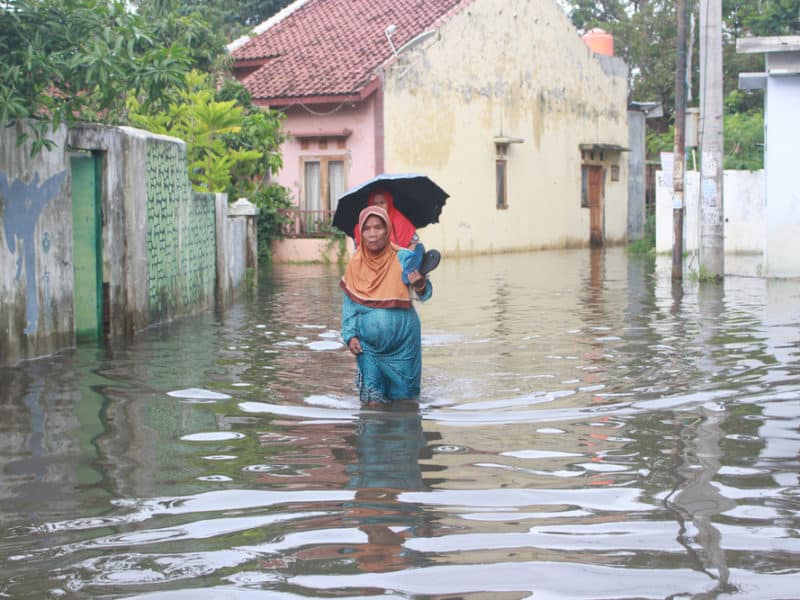January 10, 2022

Sri Lanka’s malaria elimination success can provide insights to malaria-endemic nations in conflict. Despite a 26-year civil war and insufficient healthcare workers, medication supply chain gaps, and disrupted vector control during this time, the WHO declared Sri Lanka malaria-free in 2016. The country’s disease eradication success was based on four approaches: obtaining cooperation despite political differences, establishing both centralized federal government leadership and decentralized regional operations, using neutral parties to resolve healthcare gaps, and maintaining efforts post-elimination to prevent disease reintroduction. Similar approaches may help Afghanistan, Ethiopia, and other nations reduce malaria incidence and mortality despite their current conflicts. [BMJ Global Health]
A One Health approach is needed to mitigate increasing infectious diseases caused by climate change. The projected global temperature increase of 1.5-2°C is estimated to impact pathogen spread, particularly the geographic and temporal distribution of vector-borne diseases such as dengue and malaria. Compounded by ecological issues such as overcrowding, pollution, excessive natural resource consumption, deforestation, and overall ecosystem degradation, climate change’s impacts will also increase vector and pathogen propagation and transmission intensity. Therefore, adequate mitigation and adaptation strategies require a One Health approach with a focus on the development and enhancement of surveillance activities. [International Journal of Infectious Diseases]
Trimethoprim/sulfamethoxazole and high-dose doxycycline have lasting effects on skin microbiota. A prospective, randomized study assessed the effects of doxycycline (low-dose: 20 mg and high-dose: 100 mg), cephalexin, and trimethoprim/sulfamethoxazole antibiotic regimens on the skin, oral cavities, and stool of healthy individuals. Analysis of samples collected before, during, and up to 1 year after treatment showed that individuals receiving these antibiotics experienced notable changes to skin microbiota and emergence and persistence of resistant staphylococcal species, highlighting the long-lasting effects of antibiotic use on akin microbiota. [Science]
Telemedicine has the potential to work well but is not suitable for all. Telehealth has several benefits, including time reduction, improving cost-effectiveness, and relieving access constraints. However, it may benefit patients already receiving satisfactory care, individuals at an early stage of their disease journey, those from disadvantaged backgrounds who lack health insurance, live in internet deserts, or are non-native English speakers, are at a disadvantage. Policy and health systems must address these challenges so that solutions do not widen health inequity. [The Lancet Rheumatology]
Mass azithromycin distributions in Niger support height growth in the shortest children. Biannual mass azithromycin distributions have been shown to decrease child mortality. A placebo-controlled cluster-randomized trial with longitudinal anthropometric monitoring revealed that this intervention had no impact on growth in children under 5. However, azithromycin distribution resulted in statistically significant height growth in the shortest quartile, which may imply that mass azithromycin distributions can impact growth, but only in young children. This finding supports previous reports showing that the strongest azithromycin-associated mortality reduction among the youngest children. [JAMA Network Open]
Brazil’s riverine people are receiving COVID-19 vaccines, despite many challenges. Riverside dwellers from remote areas of the Brazilian Amazon Forest are at high risk during the pandemic due to high rates of comorbidities such as diabetes and infectious disease, a communal lifestyle where large families share small homes, and lack of access to healthcare. Accessing centralized vaccine sites often involves expensive multi-week journeys, transportation challenges for people and supplies, and limited communications options, among others. Despite enormous logistical challenges, misinformation, and lack of communication campaigns, the riverine people have understood the importance of vaccination, with healthcare workers reporting fewer than 1% of the people approached refusing vaccination. [Science News]
COVID-19 pandemic disruptions to immunization programs reduced vaccine administration by as much as 57%. Data from WHO regional offices and pulse surveys evaluated disruptions to immunization services across 170 countries. The greatest disruption was in April 2020, when 33% fewer vaccines were administered globally. Immunization declines at this time varied substantially across regions, with 9% decline in the WHO African region and 57% decline in South-East Asia. 69% of countries experienced disrupted outreach services, while 44% had disrupted fixed-post immunization services. Service recovery started in June 2020 and continued through the year. [The Lancet Global Health]
Ensuring vaccine production self-sufficiency is essential for Africa’s future pandemic preparedness. Currently, 99% of Africa’s vaccines are imported. However, the COVID-19 pandemic is driving new manufacturing initiatives across the region. These are essential since the pandemic has highlighted how over-centralized vaccine production is incompatible with health equity. Given that Africa makes up a quarter of global demand for vaccines, ensuring self-sufficiency and manufacturing capabilities in regions with high infectious disease burdens is essential. To yield long-term benefits, sustainable knowledge transfer, long-term research and development investments, academic partnerships, and advancements in regulatory management and health economics are needed. [Bulletin of the WHO]
Animal study suggests reduced pathogenicity for Omicron. In a recent preprint, researchers in the United States suggest that the SARS-CoV-2 omicron may cause less severe lower tract respiratory disease than previous variants. In contrast to hamsters infected with the Alpha, Beta, or Delta variant, those infected with Omicron did not experience an initial weight loss. Furthermore, while viral replication was detected in upper and lower respiratory pathways in animals infected with Omicron, the latter had lower viral loads, implying reduced lower respiratory tract disease. [bioRxiv]
COVID-19 vaccine hesitancy is growing in the global south and may affect other vaccines acceptance. Originally, higher levels of vaccine hesitancy were reported in high- and middle-income countries; however, increasing vaccine hesitancy now is becoming common among the world’s poorest nations. Globally, factors such as lack of trust in governments and medical or scientific authorities, misinformation, and safety concerns given the rapid development and delivery of these vaccines have affected vaccine hesitancy. However, experts warn that vaccine inequity may also be a contributing factor, threatening vaccine rollouts in countries that are finally receiving doses after a long wait. Community engagement and COVID-19 vaccine integration into existing infectious disease prevention and treatment services may also reduce hesitancy in the long term. [Nature]
Photo: Shutterstock











